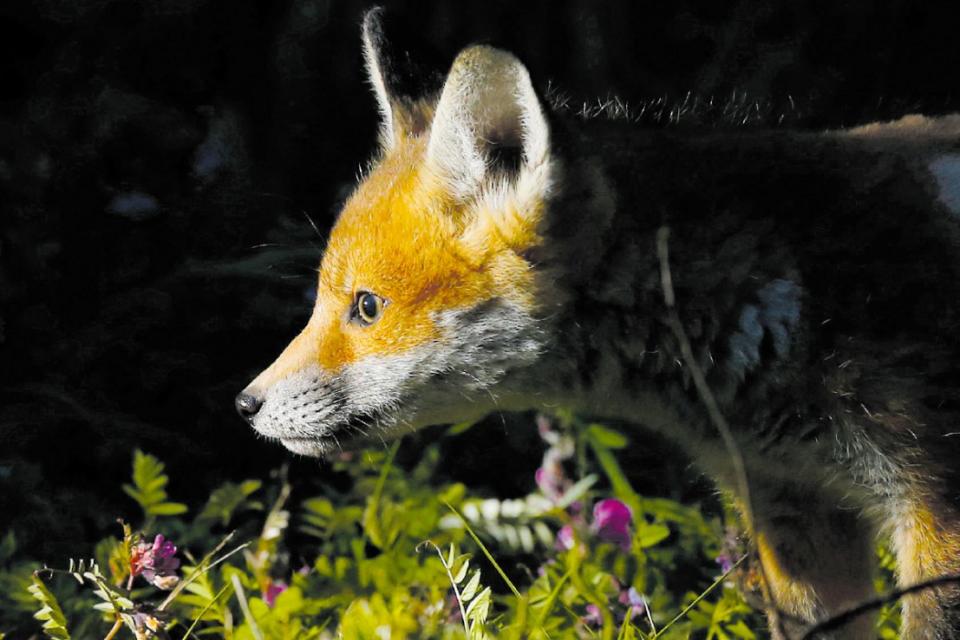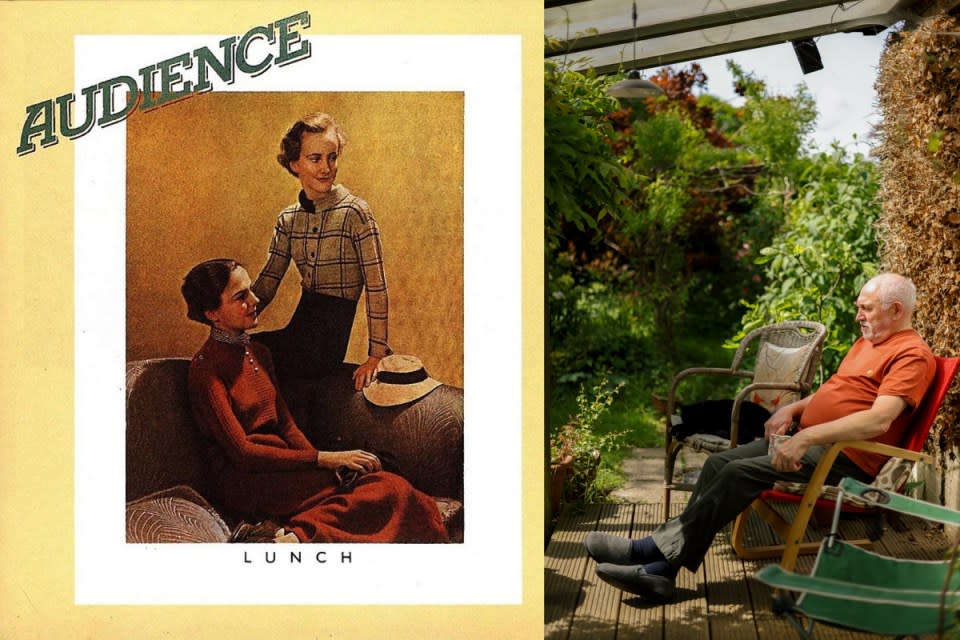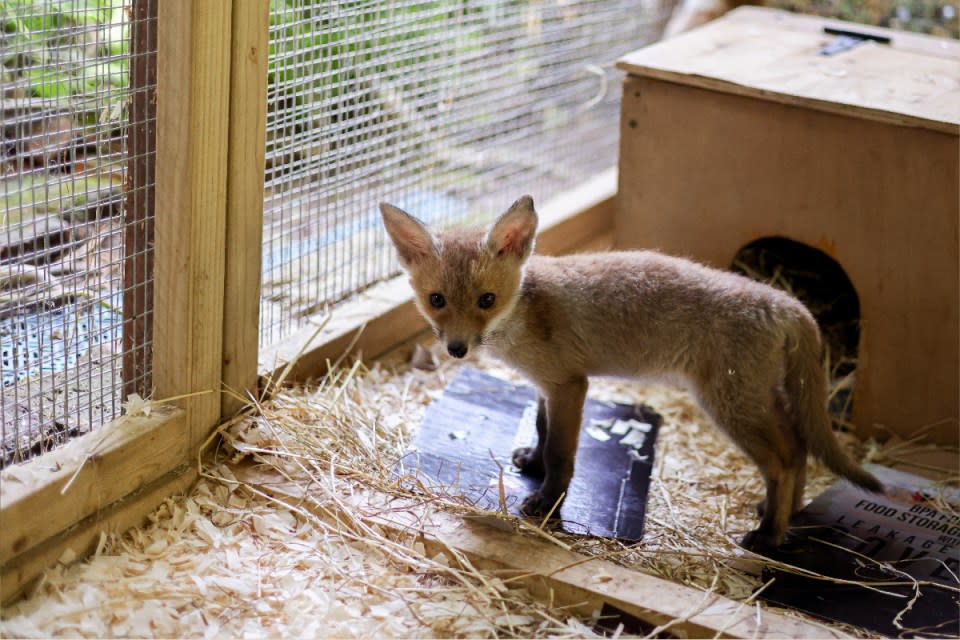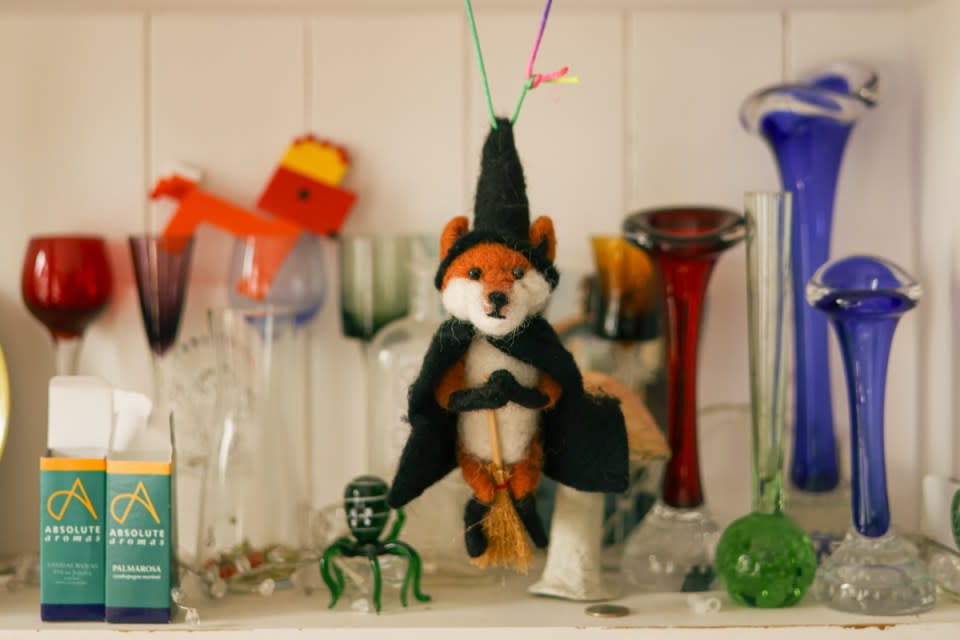The Fox Project: How one man swapped rock stardom for a life rescuing urban foxes

For more like this story about urban foxes from City A.M. – The Magazine, tap here
In October 1969, Trevor Williams, the lyricist and bassist for prog rock group Audience, took to the Lyceum stage to open for Led Zeppelin. A month later, at the same venue, he opened for Pink Floyd. After being snapped up by Genesis’ record label Charisma, Audience appeared to have a bright future ahead of them.
But three years later, following a US tour with Rod Stewart that was considered by all involved to be very successful, the band split. Their last record, Lunch, was finished with the help of the Rolling Stones. They’re one of those groups that came tantalisingly close to megastardom, only to fade into relative obscurity. Today they maintain a cult following but average only around 6,000 monthly listeners on Spotify.
It is a glorious Friday morning in May when Trevor invites me into the cottage in Kent he shares with his wife Sue. I walk over a fox doormat, duck under a hanging fox ornament, and pass by lashings of fox-adjacent material on my way to the kitchen, where Trevor is making a cup of tea. “The problem with being so strongly associated with one thing,” he tells me, “is that everybody buys you stuff with it on.” You see, while Trevor may once have been on the same line-up as David Bowie and Black Sabbath (for the Atomic Sunrise festival of 1970), these days he is known for something quite different. These days he is the fox guy.

At the bottom of his garden, about 20 yards from the kitchen, no fewer than 21 fox cubs, born just weeks ago, crawl over each other. Trevor swapped rock stardom for The Fox Project: a charity, of which he is the CEO, that rescues injured or young foxes, nurses them to health and independence, and releases them back to the wild. In 1992, The Fox Project took in three foxes. Last year, the hospital, ambulance and care home combined took in 1,400.
•••
Scientists differ on whether the red fox – vulpes vulpes – is native to Britain. There is some evidence of foxes roaming through Warwickshire more than 135,000 years ago; the earliest specimen found anywhere was in Hungary, dated sometime north of 1.8m years ago. The relationship between them and humans ranges from companionable – foxes have been found buried alongside humans in the middle east – to mythological, most notably in Japan, where the famed kitsune forms the basis of a thousand trickster stories.
They also serve as prey. Trevor met Sue, his wife of 36 years (“we didn’t get together for twelve years – he needed to grow up,” Sue chuckles), when they were hunt saboteurs. “It was the sense of injustice,” Trevor says. But disrupting hunts wasn’t enough: he wanted to set up an advice line, providing information on foxes that wasn’t from either the pro-hunt lobby nor the extreme anti-hunt campaigners. “There were myths and legends and misunderstandings and there really was nowhere else to go to.” That turned into something more substantial, located not on the green and blood-soaked lands of England’s historic counties but in south London.
Culling foxes doesn’t even work. Clearly it’s not ideal for the fox but neither does it reduce their overall numbers
There are around 300,000 foxes in the UK today, a good 10,000 of which live in London. That number has remained pretty stable. Urban environments, after all, suit these natural scavengers, providing them easy access to food. The fox population at large is resilient, and has shown an extraordinary ability to adapt.
Foxes began what we might call their ‘urban phase’ in the 1930s and 40s, exploding after the war into the burgeoning suburbs. Councils, faced with a problem they barely understood, didn’t have much power to deal with these new urban foxes, and yet they were held responsible. Most decided to simply shoot them, especially when they edged into gardens or parks or hospitals. Bromley, on the border between London and Kent and now part of The Fox Project’s territory, once employed a fox control officer who blasted 300 in a year.
The problem, Trevor explains, is that culling foxes doesn’t even work. Clearly it’s not ideal for the fox but neither does it reduce their overall numbers, with a raft of scientific studies showing that culls only temporarily displace a population, sometimes for a matter of days.

A far more effective threat than guns or hounds is the car, which is responsible for as many as half of all fox deaths. Other dangers are less obvious. Netting is a particular problem, from goal nets in back gardens to protective netting around plants. Foxes get caught and panic, often tearing their flesh in an effort to get free. The well meaning but ill-informed might cut the netting to free the fox, but those wounds, when infected – which happens often – can turn very nasty indeed. The best thing to do is call the professionals.
•••
The Fox Project is pretty simple. The public see an ill fox or an abandoned cub and call the charity’s emergency line. From 9am to 9pm, every day, there are ‘fox ambulances’ doing the rounds. If there are too many calls, ‘fast responders’ are on hand to help. Unlike real ambulances, they invariably turn up quickly.
Sometimes, an ill fox will need to be trapped, in which case The Fox Project will work with a concerned homeowner to set up a regular food pattern, and then catch them in what amounts to a gigantic, humane, non-lethal mousetrap. Lost and ill cubs head to Trevor’s garden to bulk out, spending time with other cubs and forming familial bonds before heading to ‘foster’ gardens around the south east. Ill foxes – common ailments include mange, injury, and so on – head to the fox hospital in Paddock Wood, a ten minute drive away from Trevor’s place.

If the idea of a ‘fox hospital’ conjures images of a bucolic country farm, you’d be wrong. It’s in a nondescript industrial estate which, apart from the over-indexed amount of fox paraphernalia adorning the vehicles in the car park, does not scream ‘wildlife sanctuary’. Inside, however, is a command and control centre crossed with a field hospital: it is quite the operation. A volunteer who handles the phones and organises the logistics of the rescues waves as she takes another call, looking every bit the emergency dispatcher.
In the main room, Nikki shows me the pens: I meet Geordie, who came in dazed and confused but is finally getting back to his full diet. The working theory is he was hit by a car but not hard enough to be injured, just a tad… concussed. Then there’s Dave, who was found with a massive abscess across his back; he’s recovering after having it lanced. JonJo is in a rougher state: he was bleeding badly when he was rescued, with staff thinking he’d crawled through barbed wire. He’s had stitches (and a shave) and today’s rather challenging task is to clean his wound, which involves covering his head with a towel and grabbing him by the scruff of his neck to administer the medicine. JonJo is less than thrilled by proceedings but just about gets the wash he needs. Elsewhere, Chelsea is getting back to health after being found hiding at the back of a shed, covered in often-fatal sarcoptic mange.
Now and again it gets you. You find yourself grieving a little bit. But you’re just trying to give those that make it another go, a second chance. You have to be pragmatic and you have to move on.
Others that come in are victims of what Trevor calls “misadventure.” Jaja, for instance, is not named after the controversial Star Wars character, but the jam jar he arrived in, having popped his head inside to see what remained. He was fine, and released back to the wild with a salutary lesson in the dangers of curiosity. Jaja’s moniker is unusual, says Trevor, with most rescued foxes being named after a nearby park or landmark. “The one name we’ll never allow is Basil,” he says.
Today, at least, it seems those in the hospital’s care are on their way back to health. That is not always the case. The ultimate aim is to be able to release the foxes back to the wild but the hospital’s success rate, Nikki tells me, is around 40 per cent. “When you’re putting them to sleep, you know you’re taking the pain away,” she says. Earlier in the day, Trevor, Sue and the various volunteers pottering about the cub sanctuary talked in hushed tones about “last Saturday.” More than a dozen foxes came in. Not all of them – some cubs, some adults – made it. How does Trevor deal with the loss? A sigh. “You have to be pragmatic,” he says. “And you have to move on, which you do, because more come in.” Another sigh. “Now and again it gets you. You find yourself grieving a little bit. But… you’re just trying to give those that make it another go, a second chance.”
•••
While few people appreciate their bins being torn up, there is an undeniable thrill to catching sight of a fox from the top floor of a night bus, or a bushy tail disappearing over the back fence late at night. One viral video, which did the rounds on Youtube last year, saw an urban fox wrangle not one, not two, but three chicken drumsticks into its mouth to take back to its den, before hopping over a four foot fence. Trevor tells a story of a lady in Greenhithe, near Dartford, a place not famed for its pastoral beauty. “She said seeing foxes connected her to something, to the land. I’ve never forgotten that.” In a concrete world, there is something almost transgressive about our furry, mischievous neighbours, wild dogs that live underground and come out at night to poke around our gardens.
Sitting in his idyllic Kent garden, Trevor seems content. He may no longer be sharing a stage with some of the biggest bands ever to pick up a guitar, but he’s the picture of a man who has found something rewarding to do with his days. He dreams of opening a proper wildlife hospital, but says he has run into difficulties with land-banking developers, planning departments, and an ever-present shortage of cash. Still, he perseveres.
As I leave this secret haven for foxes, I remember something one of the volunteers told me. When cubs are deemed healthy enough to live on their own, and older foxes have recovered from their ailments, they’re released as close as possible to where they were found. Once free, the foxes instinctively bolt. But then, a few seconds later, they turn back to look at their human rescuers. The fox is probably checking it isn’t about to be caged again – but it’s tempting to think it’s a little thank you.
• The Fox Project is raising funds for new veterinary equipment. You can find out more here

 Yahoo Finance
Yahoo Finance 